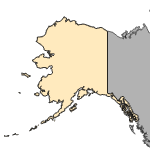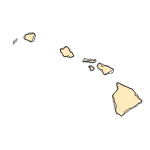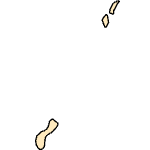Gila coerulea
(Blue Chub)
Fishes
Native Transplant |
|
Common name: Blue Chub
Taxonomy: available through
www.itis.gov
Identification: Moyle (1976a); Page and Burr (1991); Bond (1994).
Size: 41 cm.
Native Range: Klamath and Lost River systems of Oregon and California (Lee et al. 1980 et seq.; Page and Burr 1991).



|

Alaska |

Hawaii |

Puerto Rico &
Virgin Islands |

Guam Saipan |
Hydrologic Unit Codes (HUCs) Explained
Interactive maps: Point Distribution Maps
Nonindigenous Occurrences:
Table 1. States with nonindigenous occurrences, the earliest and latest observations in each state, and the tally and names of HUCs with observations†. Names and dates are hyperlinked to their relevant specimen records. The list of references for all nonindigenous occurrences of Gila coerulea are found here.
Table last updated 12/17/2025
† Populations may not be currently present.
Means of Introduction: Unknown. According to Logan (personal communication), Oregon introductions took place during the 1920s.
Status: Introductions into Paulina and East lakes in Oregon were unsuccessful (Logan, personal communication). Status of Diamond Lake introduction unknown.
Impact of Introduction: The impacts of this species are currently unknown, as no studies have been done to determine how it has affected ecosystems in the invaded range. The absence of data does not equate to lack of effects. It does, however, mean that research is required to evaluate effects before conclusions can be made.
Other Resources:
FishBase Summary
Author:
Fuller, P.
Revision Date: 12/2/1999
Peer Review Date: 12/2/1999
Citation Information:
Fuller, P., 2025, Gila coerulea (Girard, 1856): U.S. Geological Survey, Nonindigenous Aquatic Species Database, Gainesville, FL, https://nas.er.usgs.gov/queries/FactSheet.aspx?speciesID=538, Revision Date: 12/2/1999, Peer Review Date: 12/2/1999, Access Date: 12/17/2025
This information is preliminary or provisional and is subject to revision. It is being provided to meet the need for timely best science. The information has not received final approval by the U.S. Geological Survey (USGS) and is provided on the condition that neither the USGS nor the U.S. Government shall be held liable for any damages resulting from the authorized or unauthorized use of the information.